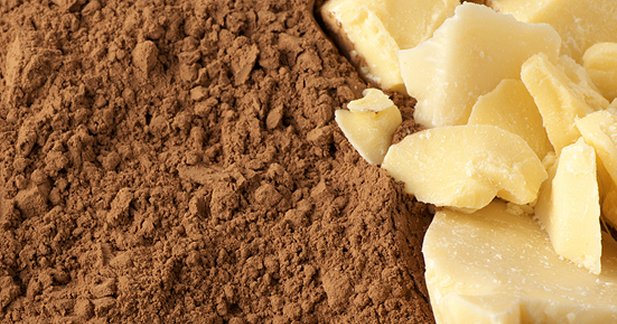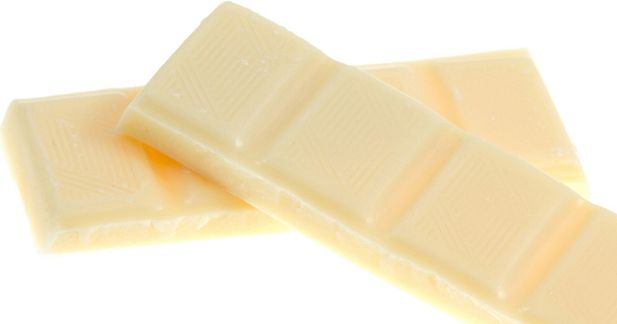Tag Archive: cocoa butter

Q&A: Can I Use Cooking Oil and Cocoa Powder to Make Chocolate?
December 26, 2014
Here's a question I recently received from a reader, "Can I use any cooking oil as a substitute for making chocolate bars from cocoa powder?"
Answer
Q&A: What’s the Big Deal About Lecithin?
August 22, 2014
Recently a reader asked me the following question. It's a good one, so I wanted to answer here on the blog...
What is the big deal about soy lecithin and if most artisan producers manage to do without it, why don't all chocolatiers?
The big deal about soy lecithin is a combination of science and economics.
Read more
Couverture Chocolate
January 19, 2012
It's hard to resist chocolates, no argument there. What if they're made with more cocoa butter than the regular ones? How mouth-watering could that get?
Couverture chocolate is a special form of high-class chocolate used by chocolate companies and chocolatiers. It has a way richer and creamier consistency as compared to regular chocolate due to the fact that it contains a higher amount of cocoa butter. And with the right tempering, you get a more polished and glossier chocolate with a crisper "snap" when broken. It’s perfect for coating, molding, garnishing and dipping.
Read more
The Medicinal Use of Chocolate
December 1, 2011
Chocolate has a long history of use in treating several ailments such as reducing anemia, stopping the progress of diarrhea, relieving an overworked brain, and soothing an upset stomach.
It is commonly used in helping emaciated patients gain weight and stimulating the nervous systems of the physically weak by allegedly strengthening the lungs and energizing them. Yes, chocolate is that significant in traditional medicine.
Chocolate drinks with added coconut milk and onion were used in the Dominican Republic to lessen common cold symptoms. Sounds a bit odd, I know.
Read more
Chocolate And Chemistry Meet
November 25, 2011
Chocolate is downright mouth-watering, and most of us aren't exactly aware of the reason why we just can't resist it allure. But those who make chocolate pretty much know why people find it irresistible, and it all boils down to chemistry.
Chocolate may be sweet and all that but the main culprit for its unexplainable appeal is the fat, according to Professor Dolores O’Riordan of University College Dublin who is based in the Institute of Food and Health. In a lecture during the Science week named Smart Chemistry – Tasty Food!, she said "The melting of the fat is very important."
Read more

White Chocolate Tidbits
October 27, 2011
Despite being classified as 'chocolate,' white chocolate isn't truly chocolate. It may be a confectionary derivative of chocolate as it also comes from the same cacao plant, but its manufacturing process is rather different.
Its process for creation initially entails the drawing out of usable items from the cacao bean. Unlike the conventional chocolate that makes use of the cocoa powder ground from the seeds, the white version gets only the cocoa butter.
Even though the preparation of white chocolate has its similarities with dark and milk chocolate, it lacks cocoa paste, liquor, or powder. Thus, it does not contain the significant properties of chocolate such as thiamine, riboflavin, theobromine and phenylethylamine.
Read more
Chocolate Tempering: Crystal Sizes
April 1, 2011
Once people understand that chocolate tempering is the secret to getting great results for their own chocolate creations, I get a lot of related questions.
Here's a conversation with a student at a live, in-person session where I was talking about the crystal sizes, within the cocoa butter, for proper tempering.
Read more
Pure Chocolate?
November 26, 2010
As reported by the Associated Press from Brussels, at least according to the high court of the European Union, there is no such thing as pure chocolate!
In Europe, unlike in the United States, chocolate can contain other vegetable oils and still be called chocolate. Chocolate makers in some of the European countries typically include other oils, whereas some only use cocoa butter.
Most notably Italian law permitted the use of "pure chocolate" as a designation, contrary to the 1999 legislation where all EU nations agreed that the label would make clear whether the chocolate contained cocoa butter and/or other oils.
Read more
The Fineness of Grind
November 18, 2010
Why does one brand of chocolate bar feel so velvety smooth in your mouth but the next one feel so rough?
Let’s get down to the nitty gritty, shall we? (pun intended!) It all depends on particle size, or the fineness of grind.
When cocoa beans are shelled and roasted, the nibs are ground up and heated to form fluid chocolate called chocolate liquor, cocoa mass, or unsweetened chocolate. When chocolate liquor is then blended with other ingredients like sugar and milk powder, the resulting paste is ground up even further. This process is called “refining.”
Read more
It’s All About the Crystals
November 2, 2010
As many of you chocolate lovers already know, the fat in chocolate is called cocoa butter. What you might not know is that cocoa butter has special characteristics that make chocolate a very unique food.
One of those characteristics is that cocoa butter can crystallize in six different forms.
I've written before about tempering chocolate. What tempering does for chocolate is ensure that the cocoa butter solidifies into the best form of crystal.
Read more

